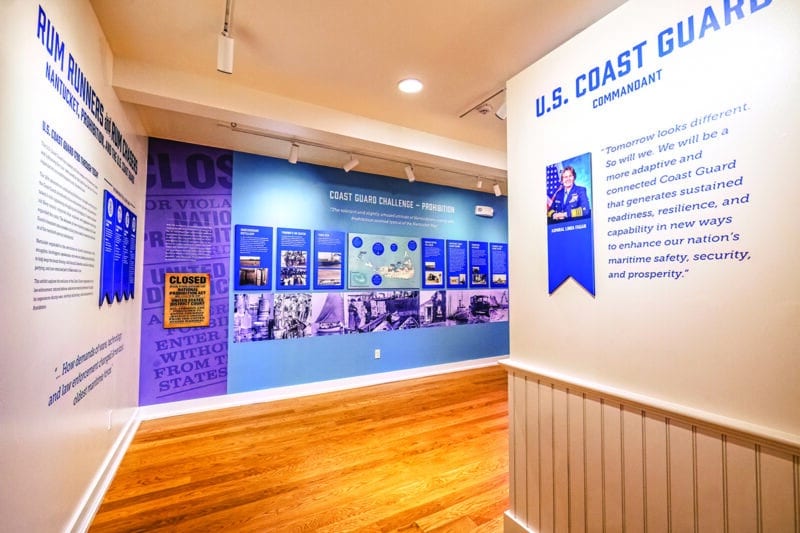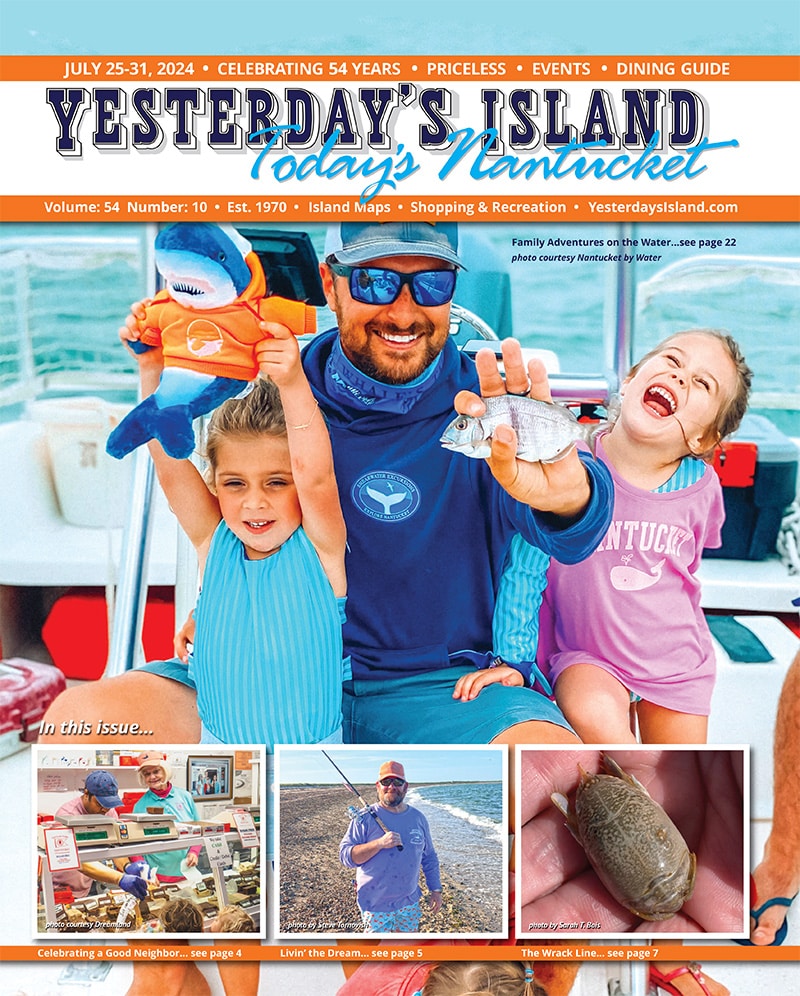by Charles Allard
From 1920 to 1933, the 18th Amendment to our United States Constitution prohibited the manufacture, sale, transport, import, or export of alcoholic beverages: but the 18th Amendment and the Volstead Act never barred the consumption of alcohol.
During the 13 years that Prohibition was the law of the land, liquor smuggling was common in the waters around Nantucket. Rum Row, a floating liquor “store” of foreign and domestic boats, was located just 12 miles southeast of Nantucket.
Though Nantucket did not suffer the level of mob activity of cities and towns on the mainland, our island was plagued by some crime related to liquor smuggling. During this period, WWI veterans acted as special policemen, a role that proved hazardous. One nearly died in December 1930, when a local rumrunner hired men to kidnap and murder him. The hitmen left him tied, gagged, and beaten in Prospect Hill Cemetery.
This year’s featured exhibit at Egan Maritime Insitute’s Nantucket Shipwreck and Lifesaving Museum tells the dramatic stories of Nantucket during Prohibition in Rum Runners and Rum Chasers: Nantucket, Prohibition and the U.S. Coast Guard. The focus is on the consequences for the Coast Guard of the enactment of Prohibition in 1920 when making, selling, or transporting alcohol in the U.S. became illegal. As the oldest armed force in America, it inherited federal law enforcement powers from one of its predecessors, the U.S. Revenue Cutter Service, the other being the U.S. Lifesaving Service. The Coast Guard came together in 1915 with the merger of these two government organizations.
During the intervening years, the Coast Guard absorbed other maritime-related tasks, but it is best known for its rescue and law enforcement activities. The latter power received attention from the government when it became apparent that despite the easy passage of Prohibition, Americans were not too keen on obeying the new law.
None of the government law enforcement agencies prepared for active resistance to the new laws. They were particularly lax in not anticipating the role of organized crime in fulfilling the market demand for spirits of any type or quality. The federal government tasked the Coast Guard with suppressing smugglers and bootleggers working within the country’s territorial waters, a job for which they were unprepared. The FBI and local police departments kept busy elsewhere.
The new exhibit emphasizes how Nantucketers and summer visitors avoided consumption restrictions with stories, photos, and maybe a few myths to tell. There is a large, colorful map of the island pointing out locations of, among other things, an underground distillery, a tea house serving smuggled “maple syrup,” and a Coast Guard station from which a couple of thousand bottles of smuggled booze simply disappeared.
There was a serious side to enforcing these laws, and the exhibit acknowledges the cost and contributions of the men and women of all law enforcement agencies, especially the U.S. Coast Guard. With the generous support of Congress, the Coast Guard acquired faster and larger ships, new equipment, and heavier armament. The size of the force expanded, and with airplanes, code-breakers, and enhanced communication capabilities, they were getting prepared for challenges that would be presented during the rest of the twentieth century.
During times of war or under Presidential order, the U.S. Coast Guard becomes part of the U.S. Navy. In World War I, it played a crucial role in coastal defense, and during World War II, it was a full participant in both the Atlantic and Pacific theaters. In photos and text, the exhibit tells the story of the USCGC Spencer W36, a ship upon which the museum’s founder Robert Caldwell served. This ship and its crew sank a WWII German U-Boat, and recused and captured the U-Boat survivors. International defense missions continue to be a part of the U.S. Coast Guard service to the country.
As noted above, lifesaving is part of the Coast Guard’s DNA because the U.S. Lifesaving Service was one of its parent organizations. As steam and motorized ships replaced sailing vessels, the old lifesaving techniques became less critical and disappeared with the introduction of helicopters in the 1950s. Today, few actions exceed the awe with which we view Coast Guard rescues at sea when watching a super swimmer jump out of a helicopter in the middle of a winter storm. All this and more are part of the 2023 featured exhibit at the Egan Maritime Institute’s Nantucket Shipwreck & Lifesaving Museum.
Located at 158 Polpis Road, the museum is open Monday through Saturday from 10 am to 5 pm. Their Shipwreck Shuttle offers free rides to and from the museum; the shuttle departs from Visitors Services at 25 Federal Street, on the half-hour, starting at 9:30 am.



